The Many Benefits Of A High-Fiber Diet
Fiber is a non-digestible carbohydrate that is found in beans, legumes, vegetables, fruits, and grains.
Consuming enough fiber each day is imperative for maintaining good health and function. Unfortunately, however, many individuals fail to consume enough.
This article will provide detail on sixteen excellent high-fiber foods that you should look to incorporate into your diet to boost your fiber intake.
The Health Benefits Of Fiber
Before moving on to the high-fiber foods, let’s first consider some of the health benefits associated with increased fiber intake.
1) Enhanced Digestive Health
Fiber plays an important role in regulating digestion and causing regular bowel movements. Failing to consume enough fiber may lead to constipation or diarrhea.
Furthermore, consuming ample fiber every day may also enhance gut health as the consumption of specific fibers can promote the growth of good bacteria (1)
2) Decreases Cholesterol Levels
Cholesterol is a waxy-like substance that the body requires for maintaining the structure of cells and transport, amongst other things.
Having a high level of a type of cholesterol, known as low-density lipoproteins (LDL), can increase your risk of developing heart disease. However, consuming adequate fiber has been found to reduce LDL levels (2).
3) Better Blood Sugar Regulation
Research on high fiber consumption has indicated that it may also help to regulate blood sugar levels and prevent them from spiking (3).
Based on these findings, it has been suggested that consuming plenty of fiber may reduce the risk of developing type 2 diabetes.

4) Body Weight Management
For those who aspire to lose weight, eating a lot of fiber is recommended. This is partly due to the fact that fiber can suppress appetite and leave you feeling fuller for longer.
It is thought that fiber draws in water in the intestine which consequently slows the absorption rate of nutrients thus increasing feelings of fullness (4).
5) Reduced Disease Risk
A combination of the above health benefits combine to reduce the risk of death from cardiovascular, infectious, and respiratory-related diseases. (5).
Sixteen High-Fiber Foods
This section will recommend sixteen foods that you should consider adding to your diet due to the fact that they contain a large amount of fiber.
High Fiber Beans and Legumes
1) Split Peas
With 16.3 grams of fiber per cup, increasing the amount of split peas you eat can have a positive impact on your total fiber intake.
Split peas are a highly versatile food which can commonly be found in dishes such as dhals and soups.
There are two main varieties of split peas – green and yellow. Green split peas tend to be sweeter and less starchy than the yellow variety.
2) Lentils
A cup of lentils contains 15.6 grams of fiber. In addition to being high in fiber, lentils also contain a great amount of protein which plays an essential role in growth and repair.
Like split peas, lentils can be used in a variety of ways and are common ingredients in salads and soups.
There are different lentils types including brown, green, yellow, red, Puy, and Beluga. Be aware that the fiber content varies slightly between each type.
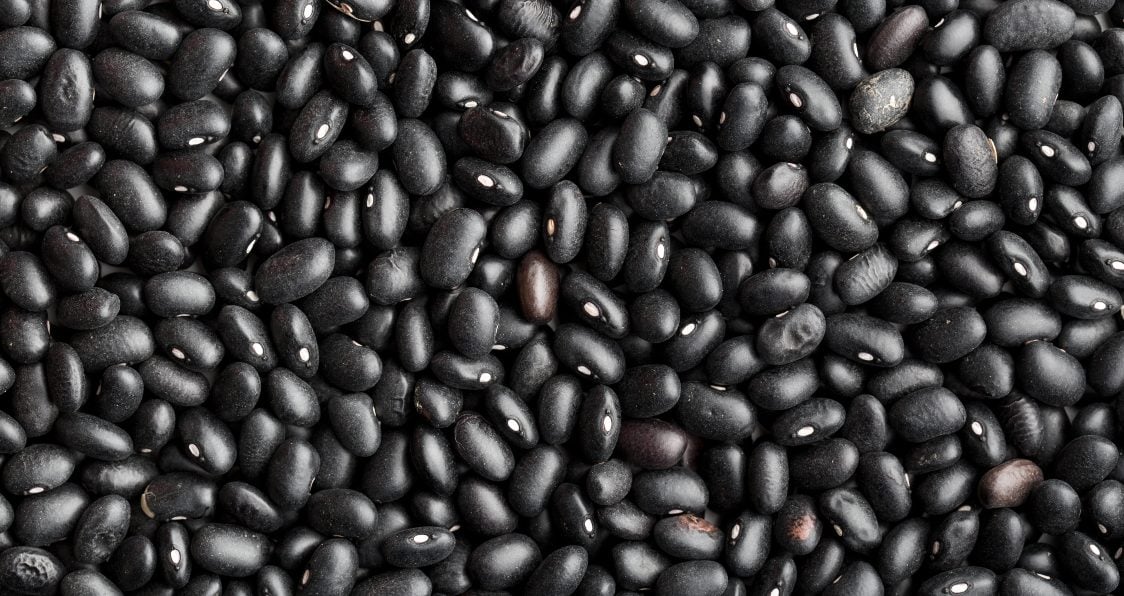
3) Black Beans
As well as being high in essential micronutrients such as manganate, folate, and thiamine, a cup of black beans contains 15 grams of fiber.
These nutrients can have an array of positive effects on bone, muscle, and heart health while also significantly reducing the risk of developing disease.
In summer, a black bean salad goes brilliantly with basically all foods that are cooked on the grill while in winter, considering adding them to vegetarian chili.
4) Lima Beans
While lima beans may not be the most popular choice for some, they do contain a great amount of fiber and can be used in many different ways in the kitchen.
Lima beans, sometimes referred to as “butter beans”, contain 13.2 grams of fiber per cup. Adding them to a range of meals can quickly and easily bump up your total fiber intake.
As well as being one of the main ingredients in succotash, lima beans can be added to soups, stews, and hummus, and salads.
High Fiber Vegetables
5) Artichokes
This strange-looking vegetable is loaded with key nutrients and antioxidants and also contains 10.3 grams of fiber per cup.
As well as potentially improving digestive health, artichokes have been associated with positively impacting cholesterol levels and blood pressure.
Artichokes are great boiled, braised, stuffed, and baked. They also go well with a variety of other foods including dairy products, chicken, seafood, and eggs.

6) Peas
Peas are particularly high in vitamins A and C which play important roles in the repair and maintenance of body tissues. In addition, per cup, peas provide 8.8 grams of fiber.
The simplest way to cook peas is to simmer them in slightly salted water for approximately five minutes. Pureeing peas is another commonly used method in cooking.
One of the most well-known ingredients to pair with peas is fresh mint. However, peas also go extremely well with onion and ham too.
7) Broccoli
Along with lima beans, broccoli is another controversial food that some seem to love while others despise.
Similarly to peas, broccoli provides an abundance of vitamins A and C and also contains 5.1 grams of fiber per cup.
Often when cooking broccoli, only the florets are used and the stems discarded. However, the stems are edible and can actually be used in a variety of different snacks and meals.
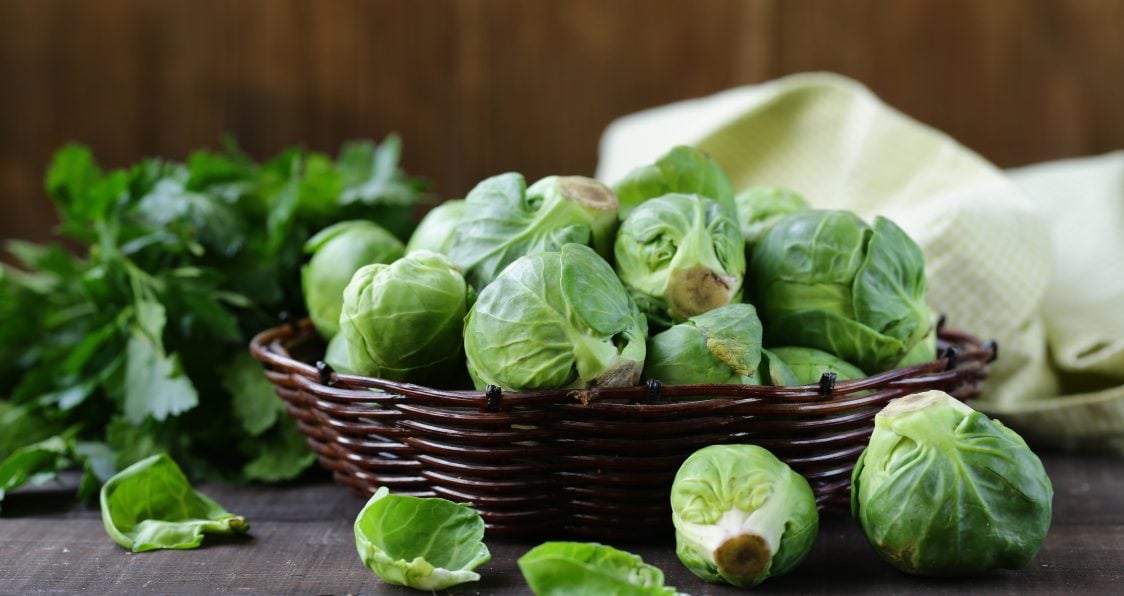
8) Brussel Sprouts
With 4.1 grams of fiber per cup, Brussel sprouts are another vegetable that you should consider consuming more often.
Brussel sprouts are particularly high in vitamin K which plays a crucial role in bone health and blood clotting.
Sprouts are cruciferous vegetables that are typically cleaned, cut, and cooked to accompany a main course. They can go with a range of different foods such as chicken, pork, duck, tofu, and mustard.
High Fiber Fruits
9) Raspberries
As well as being low in calories, raspberries contain many vital nutrients and antioxidants that are critical for good health. They also provide 8 grams of fiber per cup.
It is very straightforward to add raspberries to your diet as they can easily be added to your favorite breakfast, lunch, and dinner dishes.
Considering the sweet taste that raspberries have, they are mainstays of many deserts. Adding a cup of raspberries to your deserts is a quick and easy way to get a fiber boost.
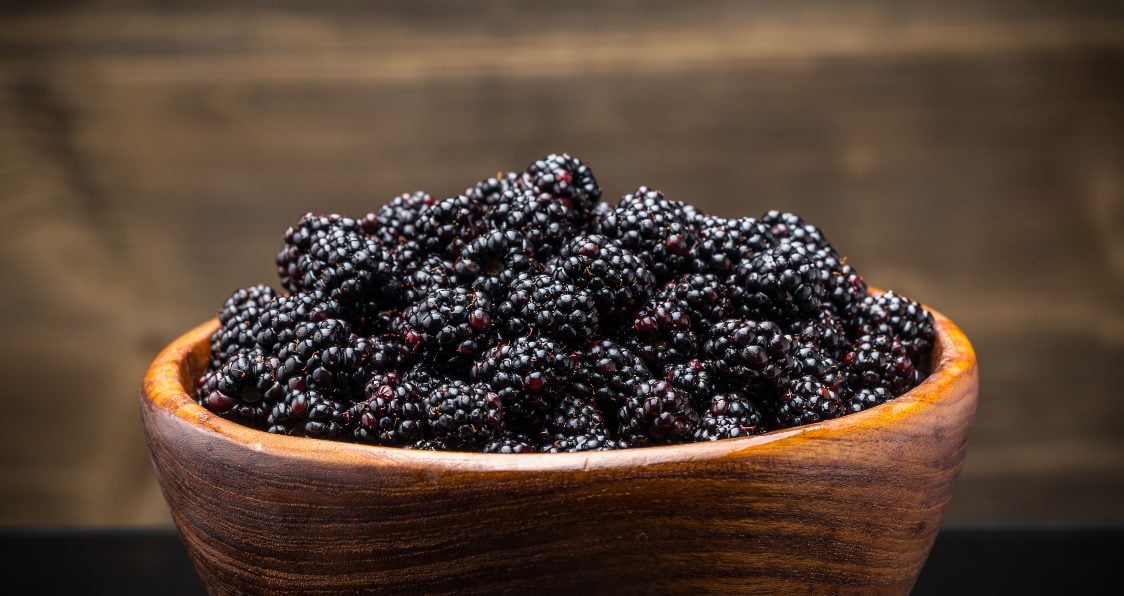
10) Blackberries
Blackberries are an absolute staple of summer. As well as tasting great, they can bring a number of health benefits which can partly be associated with the high fiber content.
There are 7.6 grams of fiber found in a cup of blackberries. In addition, this fruit is packed with vitamin C, vitamin K, and manganese.
Although commonly used in desserts, fruits such as blackberries are becoming more popular in savory foods such as salads, sauces, and even sandwiches!
11) Avocados
While you may not consider avocado to be a fruit, it technically is a single-seeded fruit. The avocado is held in high regard by health-enthusiasts and for good reason!
As well as having a variety of culinary uses, the avocado contains 6.7 grams of fiber per cup. Furthermore, it contains healthy fats that can protect against heart-related diseases.
Avocados can be used in a number of different ways and are commonly eaten with eggs, toast, pasta, and more. They can also easily be added to salads, soups, and smoothies.
12) Pears
At 4.6 grams per cup, pears are another excellent source of fiber. However, be aware there are many pear varieties and, therefore, the fiber content may differ.
In terms of health, as well as providing fiber, pears also contain folate, niacin, and vitamin A. These substances play an important role in energy synthesis and cellular function.
Pears go well with a number of dairy products such as mascarpone and creme fraise. However, they can also be paired with savory foods such as pork and nuts.
High Fiber Grains
13) Bran Flakes
Bran flakes a great source of fiber with one serving of bran flakes providing approximately 7 grams of fiber.
Additionally, bran flakes are also highly nutritious and are rich in plant compounds and key minerals such as niacin, iron, vitamin B6, riboflavin, thiamin, and folic acid.
While a bowl of bran flakes in the morning is a great way to start the day, adding them to smoothies, yogurts, and desserts can help to increase your fiber intake.
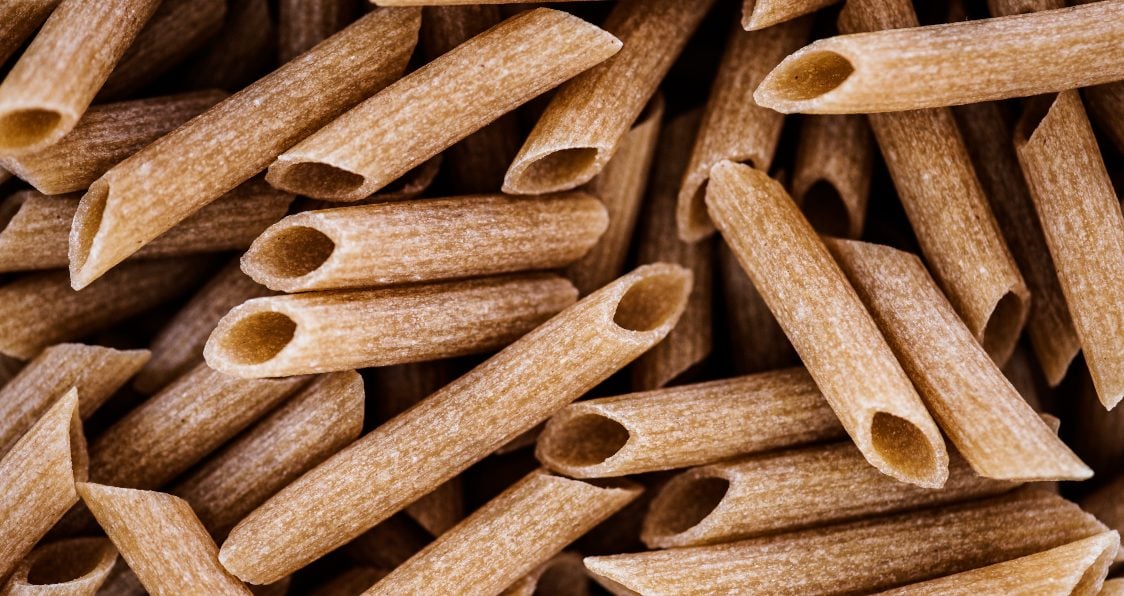
14) Wholewheat Pasta
Although perhaps less popular than white pasta, wholewheat pasta has many additional health benefits.
While white pasta contains approximately 2.5 grams of fiber per cup, wholewheat pasta contains more than double at 6.3 grams per cup!
Pasta is one of the most versatile foods around. Consider cooking a wholewheat pasta-based meal that combines a number of the aforementioned high-fiber foods.
15) Pearled Barley
Barley is a grain that comes in a number of different forms – pearled, hulled, barley flakes, and barley grit. This grain is widely consumed and is commonly found in slices of bread and cereals.
As well as containing 6 grams of fiber per cup, pearled barley also nourishes the body with key micronutrients such as manganese, thiamine, riboflavin, and selenium.
When it comes to cuisine, barley is commonly associated with soups, such as Scotch broth. However, barley can be used in many different dishes including risotto, salads, and stews.
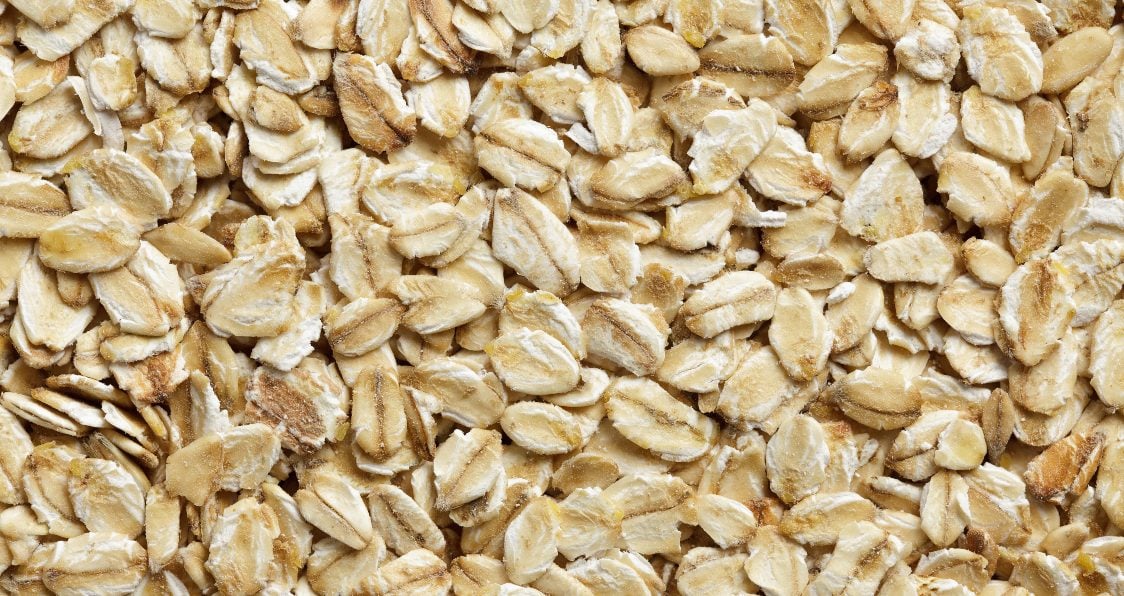
16) Oatmeal
When it comes to a nutritious and delicious breakfast, you need to look no further than oatmeal. Not only is it quick and easy to make, it can be combined with a variety of other high-fiber foods.
While oatmeal contains a modest 4 grams of fiber per cup, adding other high-fiber products such as fruits and nuts can significantly increase the fiber content.
Oatmeal can also be added to baked goods such as muffins, granola bars, and cookies to boost fiber intake further.
Four Simple Ways To Add Fiber To Your Meals
There are a number of ways that will allow you to quickly and effectively boost your fiber intake. This section will highlight four simple methods that can have a positive impact on the fiber content of meals.
Flaxseeds
Although not mentioned in the previous section, seeds are an excellent and versatile source of fiber. To put this in perspective, just two tablespoons of flaxseeds contains 3.8 grams of fiber.
Therefore, adding flaxseeds to your oatmeal, baked goods, and yogurts is a simple way of boosting your total fiber intake. Additionally, consider breading fish or chicken using flaxseeds.

Chia Seeds
Leading on from the previous point, chia seeds contain an even greater amount of fiber than flaxseeds at 5.5 grams per tablespoon!
When combined with water, these seeds create a paste that makes a great addition to many smoothies and desserts.
Carrots and Spinach
Although carrots and spinach don’t contain the same amount of fiber as the vegetables mentioned above, they can easily be grated down and added to a variety of meals to boost fiber content.
Food Processors
Food processors allow you to puree a number of these foods together to substantially increase fiber content. Consider pureeing a variety of cooked vegetables before adding them to sauces and stews.
Final Word
It is clear that consuming enough fiber per day is of great importance and something that should be prioritized. By incorporating a number of the foods outlined in this article, you can substantially increase your fiber intake and consequently experience these health benefits.
References:
1 – https://pubmed.ncbi.nlm.nih.gov/22555633/ Parnell, Jill A.; Reimer, Raylene A. (2012-01). “Prebiotic fiber modulation of the gut microbiota improves risk factors for obesity and the metabolic syndrome”. Gut Microbes. 3 (1): 29–34. doi:10.4161/gmic.19246. ISSN 1949-0984. PMC 3827018. PMID 22555633.
2 – https://pubmed.ncbi.nlm.nih.gov/9925120/ Brown, L.; Rosner, B.; Willett, W. W.; Sacks, F. M. (1999-01). “Cholesterol-lowering effects of dietary fiber: a meta-analysis”. The American Journal of Clinical Nutrition. 69 (1): 30–42. doi:10.1093/ajcn/69.1.30. ISSN 0002-9165. PMID 9925120.
3 – https://pubmed.ncbi.nlm.nih.gov/18287346/ Weickert, Martin O.; Pfeiffer, Andreas F. H. (2008-03). “Metabolic effects of dietary fiber consumption and prevention of diabetes”. The Journal of Nutrition. 138 (3): 439–442. doi:10.1093/jn/138.3.439. ISSN 1541-6100. PMID 18287346.
4 – https://pubmed.ncbi.nlm.nih.gov/10721886/ Burton-Freeman, B. (02 2000). “Dietary fiber and energy regulation”. The Journal of Nutrition. 130 (2S Suppl): 272S–275S. doi:10.1093/jn/130.2.272S. ISSN 0022-3166. PMID 10721886.
5 – https://www.ncbi.nlm.nih.gov/pmc/articles/PMC5731843/ McRae, Marc P. (2017-12). “Dietary Fiber Is Beneficial for the Prevention of Cardiovascular Disease: An Umbrella Review of Meta-analyses”. Journal of Chiropractic Medicine. 16 (4): 289–299. doi:10.1016/j.jcm.2017.05.005. ISSN 1556-3707. PMC 5731843. PMID 29276461.
